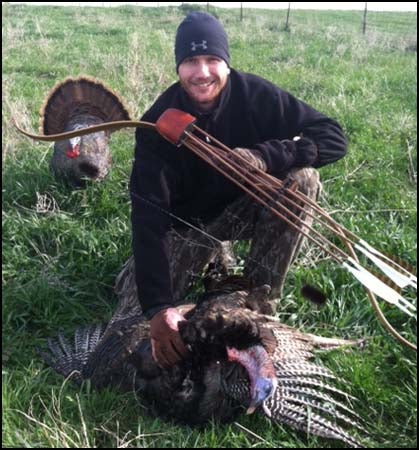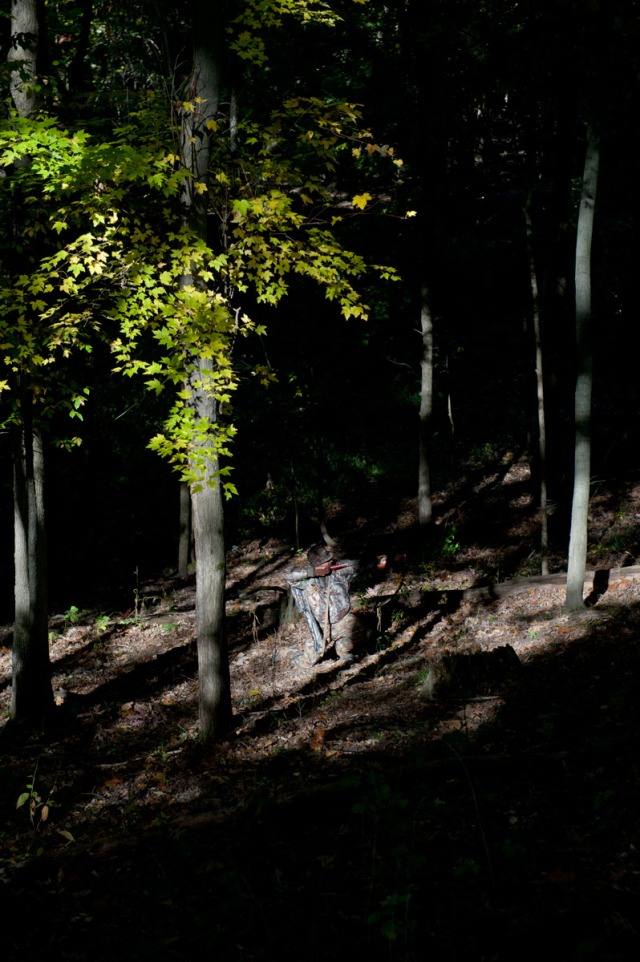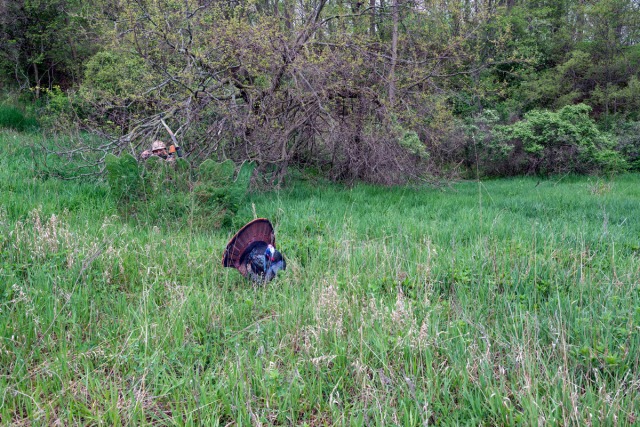
For the spring season, if you want to bag a turkey, you’re going have to scout, scout, and then scout some more. Expect this to take a good bit of time and effort. You’re scouting to find where the turkeys are roosting and where they feed or strut in the morning. Usually, they’ll keep to the same patterns in good weather.
When you’re scouting, you’re looking and listening for where the birds are, where are the hens going after they pitch down, what are the Toms doing, which Toms run together and where do they feed.
Go out at dusk the evening before your hunt and listen to where they are gobbling at sunset, use a call to get e response gobble letting you pin the roost tree. When you call and finally do get a gobble in response, do not keep calling.

Turkeys do not call as much as you think. Yes, there are times when a hen will just crank away, but not all the time, in fact, she only does that in specific situations. Until you know why she’s doing that, your best tools are patience and knowing your land.
Get there about an hour before sunrise the next morning and set up your decoys in a spot about 100 yards away from the roost tree. You want to be roughly 15 yards from your decoys (or whatever distance you feel comfortable taking that shot), positioned so your back is against a tree or some brush. Remember to stay still; you don’t want all the work you’ve put in to go to waste just because you can’t sit still. That said, look at where you’re going to sit before you put your butt down on an ant hill.
Five minutes to light, make a tree yelp – resist the temptation to continue calling. Wait for about 10 minutes and see if the birds fly to your setup from the roost. When the turkeys fly down and head to your decoy, it’s time to bag your bird. If you have a bird come in, you wait until he is in full strut. As soon as he turns around and his fan is blocking all view of you, get in position and get ready to draw back on that bird as soon as he turns around again. This may take 5 minutes or an hour, be prepared to be able to hold your bow in an odd or uncomfortable position for a very long time.
However, if you don’t hear anything for another 10 minutes, make a couple more yelps.

If they fly down, but not to you, try a few more periodic calls, but it’s probably not going to work out. If they flew down, but you’re not sure where they went and you’re not getting responses to calls stay where you’re at for at least an hour. About 80% of the time this won’t work; you, however, are hoping it’s the 20% that does work.
If, after an hour, you’re still coming up short it’s time to start hiking your hunting area. Remember, if you’re on public land it’s a good idea (and in many states it’s the law) to wear some orange while hiking; just remember to put it away when you find your next spot. Periodically you’ll want to stop and call to see if you can strike a gobble. If you don’t hear anything then keep moving. If you get a response, it’s time to quickly setup again (just like at the beginning of your hunt). After you get settled in, call again and listen to see if the Tom is coming your way.
If you think that everything is going well and the birds are getting close and then they go silent, be ready for them to show up in stealth mode. If, however, you’re pretty sure they’re gone wait 20 minutes after the last time you called before you either call again or leave. There is nothing more heartbreaking than thinking you’re done for the day, standing up and hearing the familiar sound of a turkey taking flight.
Remember, turkeys have nowhere to be and all day to get there. The hunting shows on TV cut hours of waiting to fit into their 30 minute show. Be patient and most importantly, have fun.
For some great shot placement tips, check out this video on turkey anatomy and proper arrow placement from Hoyt. It’s geared toward compound shooters, but the skills are pretty easily transferable to traditional archery.
By Jason D. Mills














.jpg)
